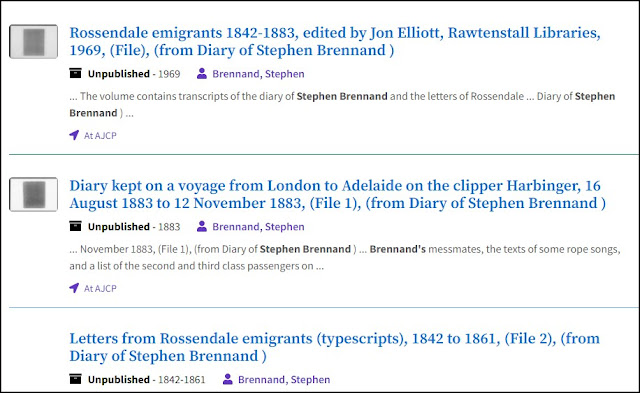Family trees, signatures, photos, diaries and letters
Registered pedigrees compiled 1842-1955 for the following: Agnew (Tasmania); Bagot (Melbourne); Barnewell (Upper Thornton, Australia);...........
and there are pedigrees for many more surnames. Yes, you can find the surnames through search but did you really expect to see family trees in the AJCP?
 |
| https://nla.gov.au/nla.obj-1214057380/view |
Many of the diaries and letters feature the signatures of the writer, letters of application for emigration may also reveal unexpected gems.
This poignant application for assisted passage from Margaret Boyle after the death of her husband, details her children's birth dates from the records in the family Bible.
 |
| https://nla.gov.au/nla.obj-2111917878/view |
Perhaps the Genealogical notes and correspondence concerning the Woolfield Family of Birmingham and Papatoetoe, New Zealand will reveal hidden treasures. Here is Ellen Poole (nee Woolfield) This is just one of many such photos found in family correspondence and journals in the many collections across the AJCP.
 |
| https://nla.gov.au/nla.obj-1098245973/view |
In more recent times one can find postcards. This 1960 one from Winifred and Jack Birchall also had accompanying photographs of Australian relations.
 |
| https://nla.gov.au/nla.obj-887239921/view |















